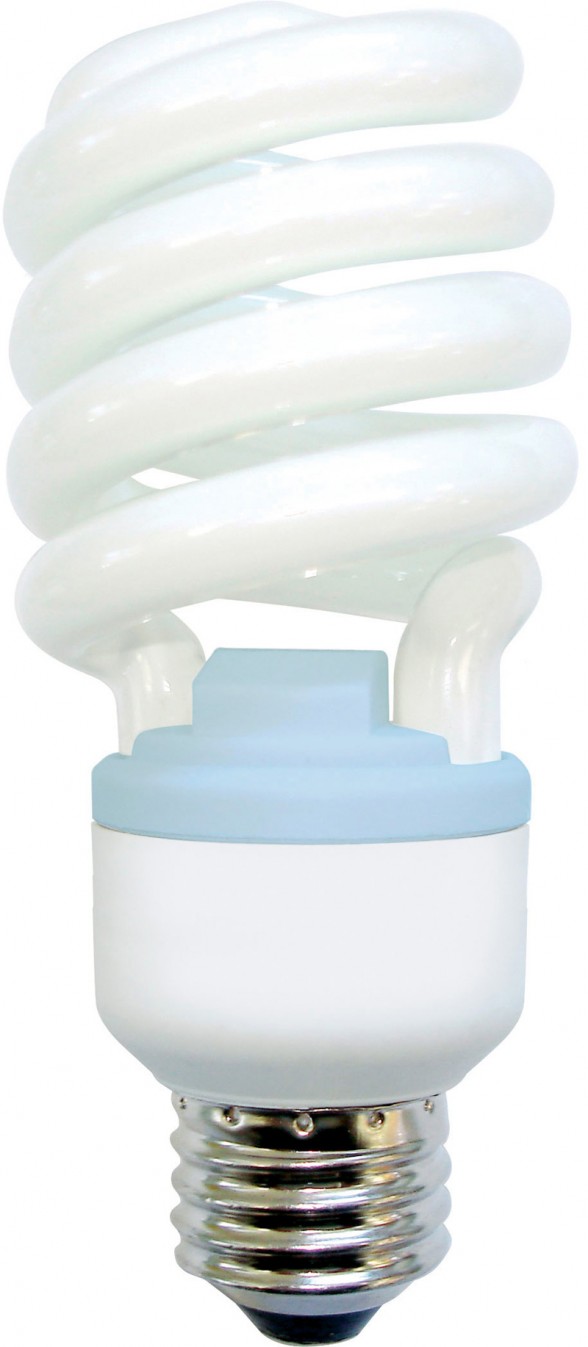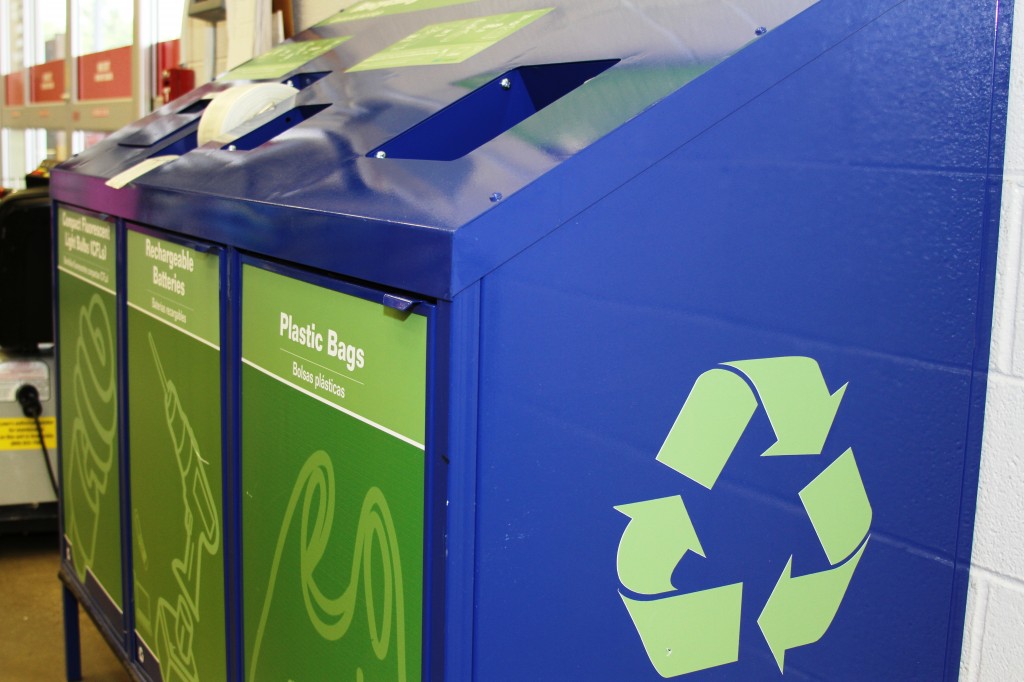Are compact fluorescent light bulbs (CFLs) safe?
Generally yes, if they are handled and stored while observing a few precautions. Mercury is not released when the CFL bulbs are used properly. However CFL bulbs do contain four to five milligrams (mg) of Mercury (the amount equivalent to the tip of a ball point pen), and thus should be managed responsibly when they burn out or are accidentally broken.
 Mercury is one of the few elements that are a liquid at room temperature. Mercury is a heavy, silvery-white metal and is a relatively poor conductor of heat, but a fair conductor of electricity. Mercury and its compounds are highly poisonous when absorbed across unbroken skin or though the respiratory or gastrointestinal tract. It acts as a cumulative poison, building up in one’s system over prolonged exposures. Mercury is very volatile in air. When room temperature air is saturated with mercury vapor, the concentration greatly exceeds the toxic limit. The concentration of mercury, and thus the danger, increases at higher temperatures.
Mercury is one of the few elements that are a liquid at room temperature. Mercury is a heavy, silvery-white metal and is a relatively poor conductor of heat, but a fair conductor of electricity. Mercury and its compounds are highly poisonous when absorbed across unbroken skin or though the respiratory or gastrointestinal tract. It acts as a cumulative poison, building up in one’s system over prolonged exposures. Mercury is very volatile in air. When room temperature air is saturated with mercury vapor, the concentration greatly exceeds the toxic limit. The concentration of mercury, and thus the danger, increases at higher temperatures.
If fluorescent bulbs are broken, small amounts of mercury is released into the environment. Proper cleanup will reduce workers’ exposure to the low levels released when CFLs are broken.
Health effects and symptoms
Mercury poisoning from inhalation – Inhalation mercury poisoning occurs when elemental mercury is vaporized, such as when a CFL breaks allowing mercury to escape. There are a variety of symptoms that may be observed, such as irritability, nervousness, mood swings and other emotional disorders. Additionally, a person who has suffered mercury toxicity can experience headaches, insomnia, tremors, weakness, muscle twitching as well as muscle atrophy. If mercury toxicity is severe, the result can be organ failure, respiratory failure and/or death.
Mercury poisoning from ingestion or skin contact – The most common way mercury is ingested is through foods. This usually occurs when a person eats a large volume of foods that have been exposed to high levels of mercury, such as with some seafood. Employees who handle mercury-laden materials, such as those during cleanup operations may come into contact with mercury if not properly protected. Therefore proper personal protection, cleaning and disposal procedures are critical.
Generally speaking, when mercury is ingested the side effects will be very similar to those associated with mercury toxicity from inhalation. Additionally, one may experience gastrointestinal symptoms and other digestive problems. Symptoms of mercury poisoning by ingestion may cause hives, skin rash, swelling in the throat or other extremities and an overall rosy complexion. Muscle weakness is another side effect that may occur in addition to kidney damage, memory loss and typical mental changes.
Preventing accidental bulb breakage
- Handle bulbs carefully.
- Store bulbs away from workers.
- Package bulbs in a sturdy container to prevent breakage.
- Label containers of fluorescent bulbs.
Safe cleanup of broken fluorescent bulbs
- Notify workers and tell them to stay away from the area.
- Open any windows and doors to air out the room.
- Shut off the HVAC systems to the affected area if you can.
- Do not use a broom or vacuum cleaner, unless the vacuum cleaner is specifically designed to collect mercury such as the one illustrated in Figure 1.
- Wear appropriate disposable chemical-resistant gloves.
- Use a commercial mercury spill kit if available, or scoop up pieces of glass and powder with stiff paper or cardboard to avoid contact with the broken glass.
- Use sticky tape to pick up any remaining pieces of glass.
- Wipe hard floors with a damp paper towel. Place all pieces of glass and cleanup materials in a seal-able plastic bag or jar with a lid.
- Wash your hands thoroughly after cleanup.
- Continue to ventilate the room and leave HVAC system off for several hours.
For the complete Compact Fluorescent Light Bulbs bulletin containing information on safe cleanup and recycling, VMLIP members can click here.
VMLIP offers more than just coverage. We are partners in risk management. How does your insurer stack up? Having all lines of coverage with VMLIP ensures that your organization is receiving comprehensive coverage and a wide variety of value-added services tailored to Virginia’s local governmental entities. Call for a quote today: (800) 963-6800. For more information on VMLIP visit: www.vrsa.us or follow us on Facebook.
** VMLIP blog postings are offered for VMLIP members to utilize in strengthening their risk management efforts. See copyright information for clarification on sharing this information.



